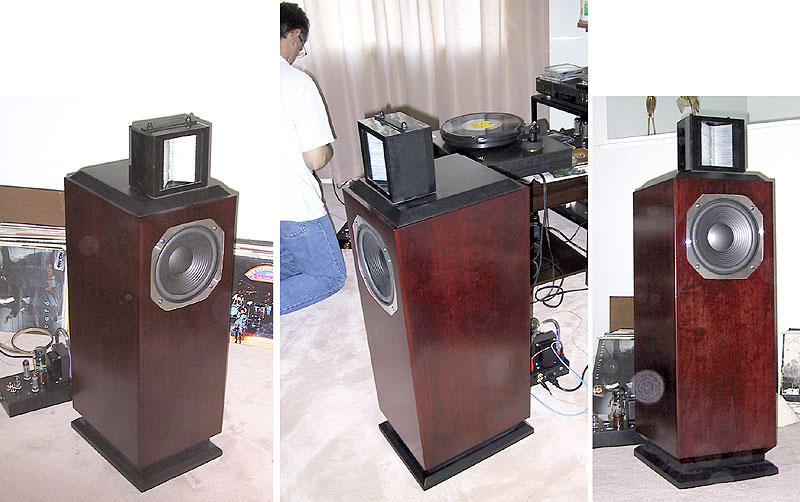Neither did I...fall of the truck.
All i here is dave posting ad nauseam bipole good, dipole no good.
Some people like dipoles. I have given up on them. (A good ESL is likely best of breed, but big room, and a very seius amplifier.)
But 2 drivers on opposite sides of a box wired to act like an OB is just a huge waste of resources and a source of a whole lot of problems.
And at low frequencies (~<500 Hz, below the baffle step), this is not a bipole, it is a push-push mono-pole. No different from any other twin driver woofer except in the use of active reaction-force cancellation to greatly ease the task of constructing a “Vibration-free” box.
As Charlie rightly suggests, generating bass with a dipole is difficult and takes brute force.
Not the same at all but these sounding quite nice, bipole below, dipole above, XO at 2Khz.

dave
Last edited:
...because the (pleasing) 2nd order harmonics will not mask the (slightly more unpleasant) 3rd harmonics anymore.
Thanx, a much more elegant way of expressing that than i have managed so far.
dave
Thanks that’s interesting. Distance from the front wall will be determined by practical considerations but in my experience the dipoles (that these subs will go under) need to be at least 5’ from the front wall and ideally more than that.A bipole (sub)woofer radiates as omnipole (like a pulsating ball), until frequency gets too high for opposing waves to match, typically above 500Hz. And a monopole is actually omni too at low freq, before baffle step starts to happen (but we are more used to thinking of axial spl).
When omni and dipole radiation sum around crossover, the net is cardioid. The wideness of this range depends on type and steepness of the crossover.
Here my outdoor-measured dispersion, with 150Hz LR2 crossover, cardioid range is roughly one octave (-6dB)
View attachment 1214634View attachment 1214635
How does this sound? Pretty good, because sound direction is practically impossible to detect below 300Hz. Major benefit is avoiding front-wall interference, but this happens only if distance and cardioid range match. One can use SBIR calculator to find this correlation. Eg. 500mm distance from the midpoint of the omni to wall gives 172Hz first null.
Tech studies of John Kreskowsky
https://musicanddesign.speakerdesign.net/craw_cross.html
https://musicanddesign.speakerdesign.net/Boundary_reflections.html